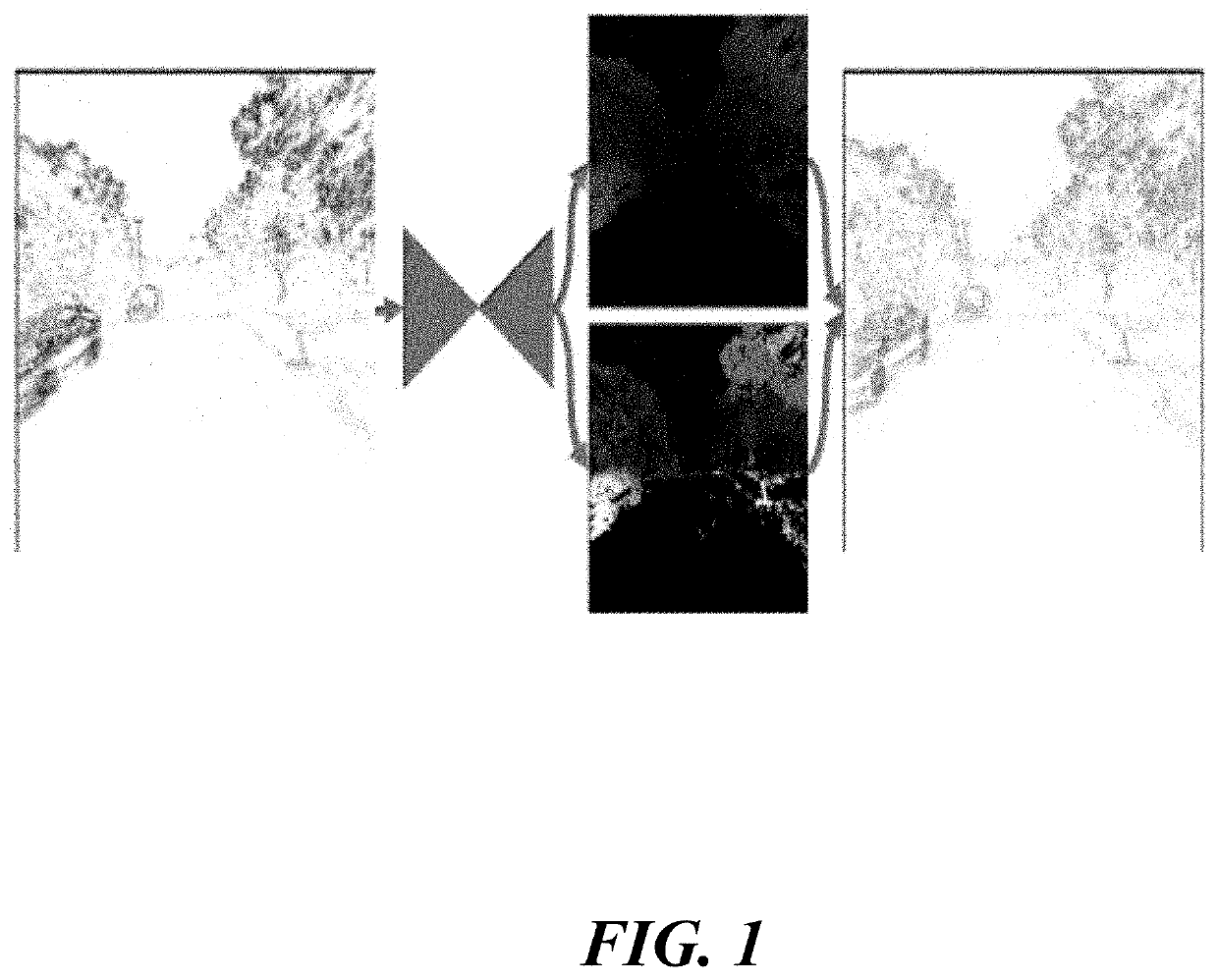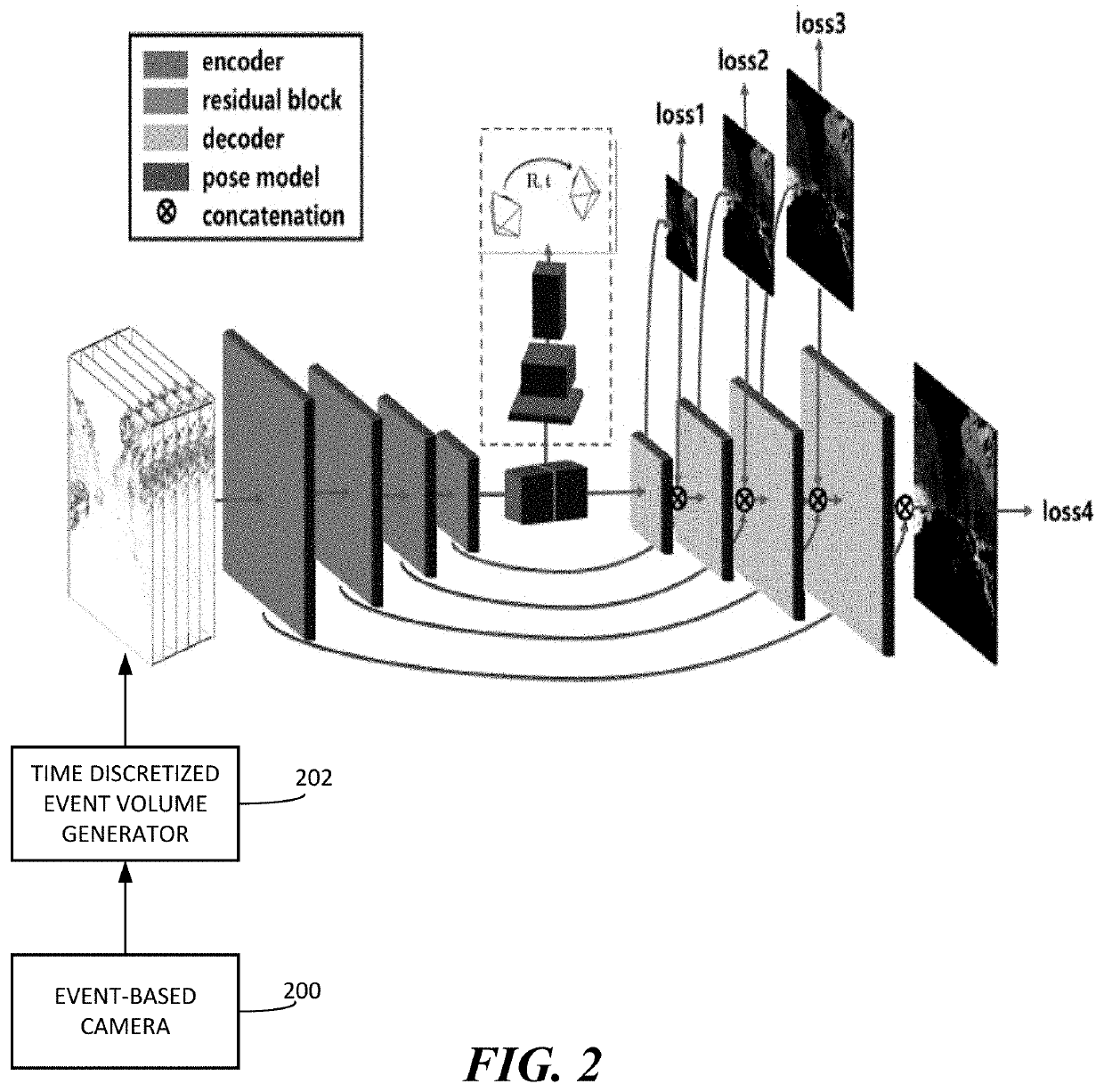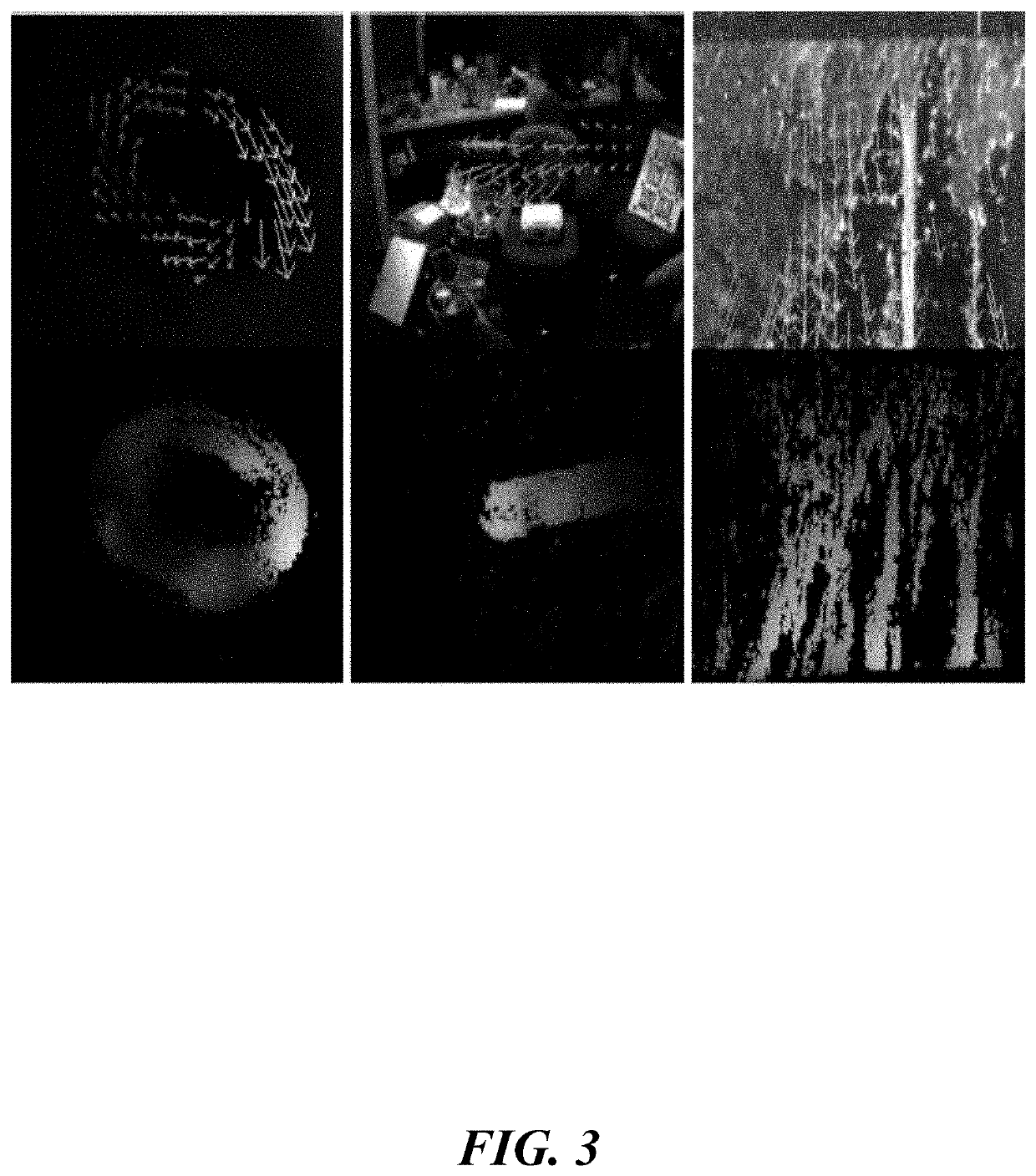Methods, systems, and computer readable media for estimation of optical flow, depth, and egomotion using neural network trained using event-based learning
a neural network and event-based learning technology, applied in image analysis, image enhancement, instruments, etc., can solve the problems of wasting valuable information, unable to directly encode the spatial relationship between events, and lack of labeled data
- Summary
- Abstract
- Description
- Claims
- Application Information
AI Technical Summary
Benefits of technology
Problems solved by technology
Method used
Image
Examples
Embodiment Construction
[0027]This disclosure is divided into two parts. The first part, entitled, “Unsupervised Event-Based Learning of Optical Flow, Depth, and Egomotion” relates to training and using a convolutional neural network to predict optical flow, egomotion, and depth using event camera input only and a loss function indicative of event-based image blur to train the network. The second part, entitled, “EV-FlowNet: Self-Supervised Optical Flow Estimation for Event-based Cameras” also relates to training and using a convolutional neural network to predict optical flow using event-based camera input only. However, rather than using a loss function based on event image blurring to train the convolutional neural network, grayscale images taken with the event-based camera that are synchronized with the event images are used to train the convolutional neural network.
Unsupervised Event-Based Learning of Optical Flow, Depth, and Egomotion
[0028]In this work, we propose a novel framework for unsupervised l...
PUM
 Login to View More
Login to View More Abstract
Description
Claims
Application Information
 Login to View More
Login to View More - R&D
- Intellectual Property
- Life Sciences
- Materials
- Tech Scout
- Unparalleled Data Quality
- Higher Quality Content
- 60% Fewer Hallucinations
Browse by: Latest US Patents, China's latest patents, Technical Efficacy Thesaurus, Application Domain, Technology Topic, Popular Technical Reports.
© 2025 PatSnap. All rights reserved.Legal|Privacy policy|Modern Slavery Act Transparency Statement|Sitemap|About US| Contact US: help@patsnap.com



